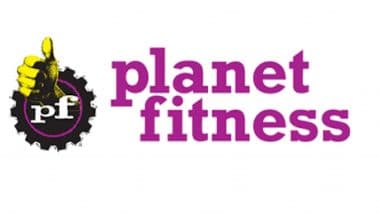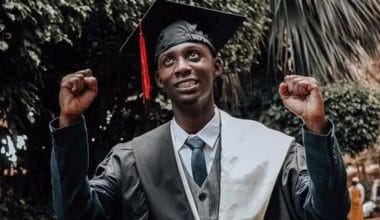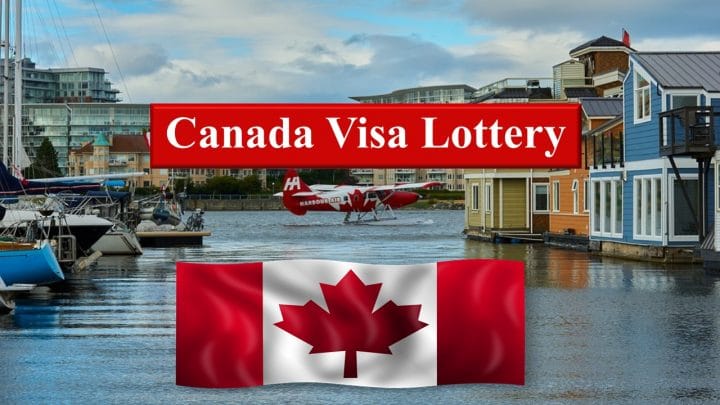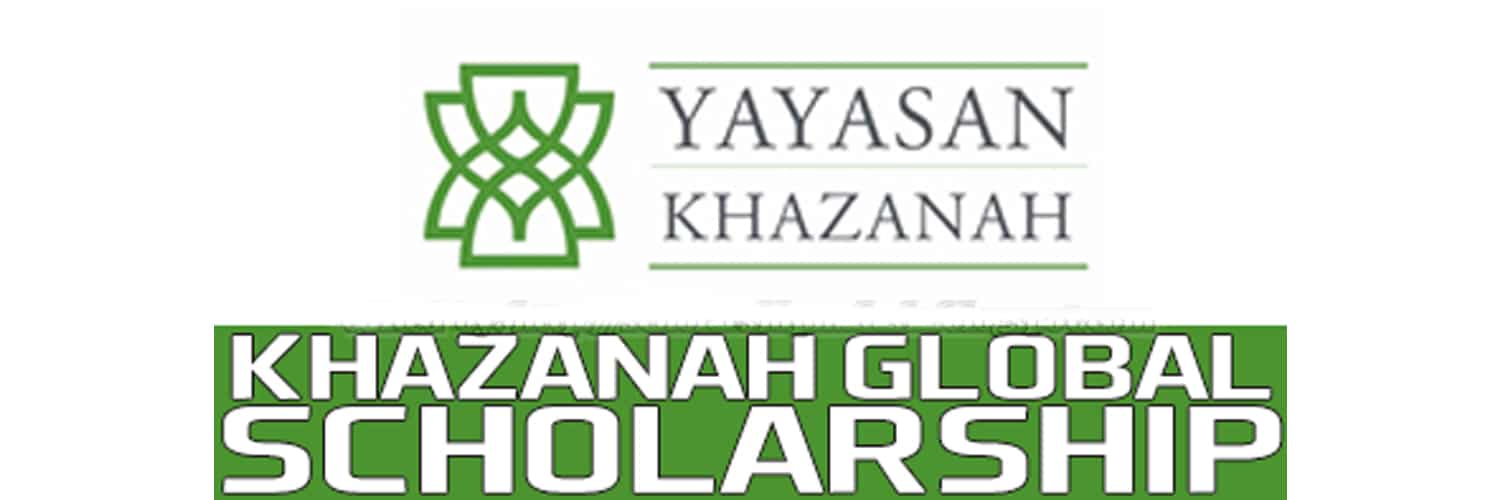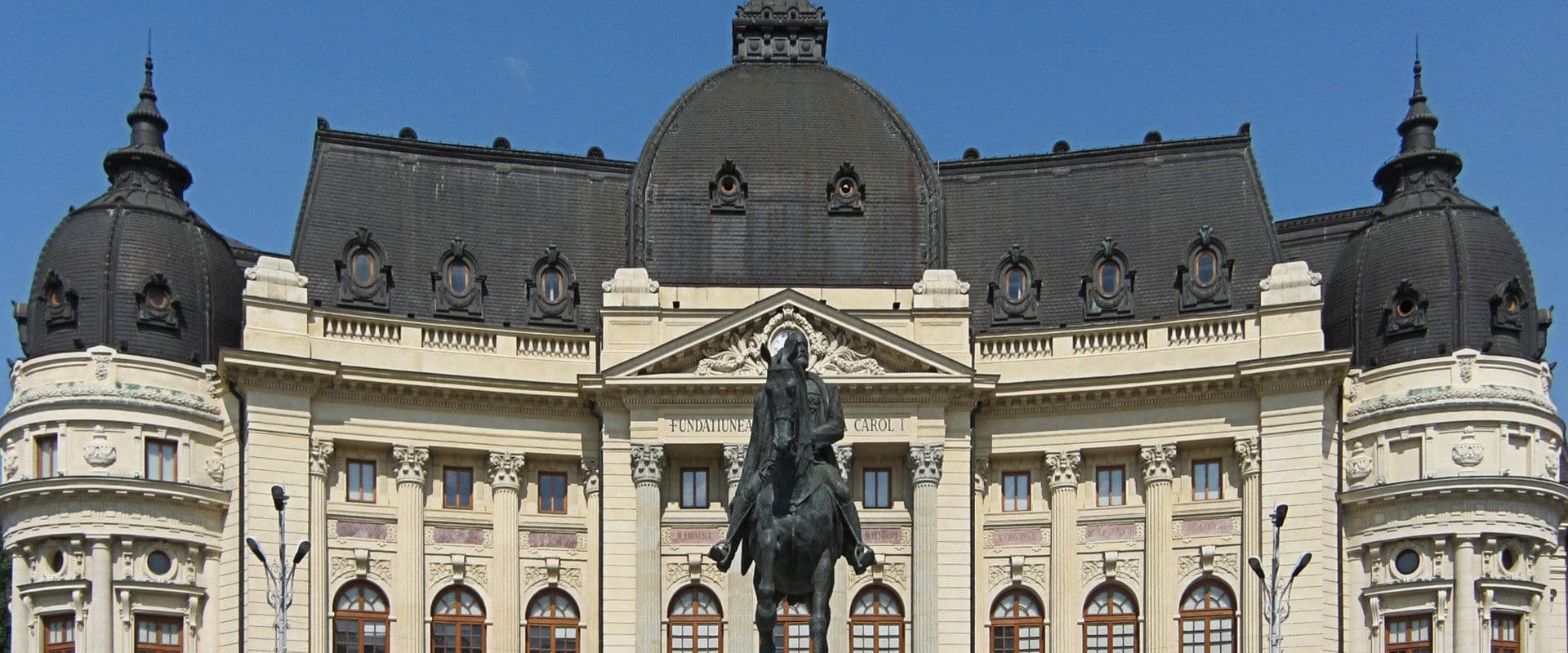Do you want to study in the United States? One of the foremost global destinations for quality and effective study pursuit is the United States. Are you aware that United States has Universities than any other nation in the world? Study in the University of Virginia.
Apart from being the home to some of the best higher institutions of learning in the world, its education system is second to none, tried and proven and has also graduated notable individual in the country and around the world. In essence, the University of Virginia is one such University, given to superiority, technological advanced and offer research-based courses.
It is also an Alma mater of great individuals that have set the pace in their profession in the country. We have in this article, carefully prepared details about the school, it’s ranking, courses, admission requirements, medical facilities, athletic team, notable alumni and requirements to travel to the US as an international student.
Table of contents
- Know More About The University of Virginia
- University of Virginia Courses
- University of Virginia Rankings
- University of Virginia Acceptance Rate
- University of Virginia Tuition Fee
- Admission Requirements for University of Virginia
- University of Virginia Logo
- University of Virginia Hospital
- University of Virginia Men’s Basketball Team
- Meet the University of Virginia notable alumni
- University of Virginia Address
- University of Virginia Students Scholarships
- Applying for USA Student Visa
- Living Expenses in the United States
- FAQ
- Editor’s Recommendation
Know More About The University of Virginia
The University of Virginia is a government-owned public research Institution, located in Charlottesville, Virginia and is the flagship for the Commonwealth of Virginia. It was officially established in 1819 by the author of the Declaration of Independence and Former US president, Thomas Jefferson and has had two other former US presidents namely James Monroe and James Madison, as its rectors.
The university is renowned for its historic heritage, vibrant secret societies and student-controlled codes of honor.
It is one of those distinctive public institutions of higher education in the United States and has the mission of developing future leaders who are well equipped to assist in the shaping of the future of the nation and the world at large.
The University is highly selective, admitting only the best and high-flyer students and those who show the excellent promise Jefferson envisioned.
In 1987, the university was designated by UNESCO as America’s first collegiate World Heritage Site; an honor it shared jointly with Jefferson’s nearby homestead, Monticello. The first set of governing board members were Thomas Jefferson, James Madison who were the first two rectors, the then sitting president of United States, James Monroe, the Chief Justice of the United States Supreme Court John Marshall, along with 24 other dignitaries.
With the help of the university-owned slaves that served the professors and students at that time, the first set of buildings were constructed and first classes were held on March 7th 1825. Since then and in more than almost two centuries, the university has expanded into a world-renowned institution and an epochal center of learning in the United States.
University of Virginia Courses
The University of Virginia has broad academic power, with major courses that cut across eight different undergraduate and professional schools, which offers disciplines like Biology, Business, Economics, English, History, Architecture, engineering, nursing, International Relations, Liberal Studies, and Psychology.
The university in Charlottesville has students from all 50 states in the United States and 148 countries. The historic 1,682-acre (2.6 sq mi; 680.7 ha) campus is internationally protected by UNESCO and has been ranked as one of the most beautiful collegiate grounds in the country.
University of Virginia Rankings
It is not a surprising fact that most of the highly-rated universities in the world today are in the United States. The University of Virginia is one of such institutions that is ranked high in the nation and the world.
In the 19 years since U.S. News began ranking public universities as a separate category, UVA has ranked in the top three and continues to rank in the Top 30 among the best of all national universities, public and private.
It is generally ranked 56th among all Universities in the United States and 113th in the world.
University of Virginia Acceptance Rate
The University is one of the most selective public universities in the nation; this accounts for its high competitive rate and a very low acceptance rate of 30%.
This means that only 30 out of every 100 applicants are granted admission into the school. Successful applicants typically have “A” averages and SAT/ACT scores that are significantly above average (a combined SAT score above 1300 is typical).
According to its admissions website, three of the most vital factors in a successful application are intellectual ability, academic achievement, and personal qualities that will contribute to the work of the University.
The admissions committee gives a lot of priority to performance and rigor of secondary school program, recommendations from a teacher and guidance counselor, extracurricular involvement and honors, writing ability as evidenced in admissions essay, and standardized test scores.
University of Virginia Tuition Fee
Generally speaking, the tuition fee in most American universities especially the top ivy-league institutions are expensive with some of them, relatively affordable. The University of Virginia tuition fee varies depending on the course and program applied for, whether you are from the state of Virginia or another state in the United States or you are a citizen of another country.
You may need to visit the school website to get more detailed information on the fees and its breakdown. However, the tuition fee on the average ranges between $16,412 (for in-state applicants) and $45,756 (for out-of-state applicants). Other costs may include;
- $1,294 for academic books
- $10,726 for room and board
- $2,754 for other minor expenses
Admission Requirements for University of Virginia
As in many other top Universities in the United States, some things are basically needed as key requirements for entrance into the University of Virginia. The University of Virginia has the following as basic admission requirements;
- Completed Common Application form
- Academic Teacher Evaluation
- School Report: Mid-year and Final Report
- Secondary School Forms and Transcript (official translation required of transcripts not presented in English)
If applicable:
- International Supplement to the Secondary School Report
- Home-school Supplement to the Secondary School Report
- Application Information
- Standardized test scores SAT or ACT (with Writing)
- TOEFL for international applicants especially those from non-English speaking countries.
University of Virginia Logo
University of Virginia logo is a graphic symbol that represents the institution as an organization to the outside world and acts as an identifying and unifying mark. The logo is comprised of two main fundamentals: the Rotunda symbol and The University logotype.
The Rotunda Symbol
This symbol is based on its initial rendering by Thomas Jefferson. The Rotunda was patterned after the Pantheon in Rome, and like the Pantheon, it is based on a perfect sphere. Jefferson dotted in that invisible globe on his sketch.
This adaptation replaces the dots with the 13 stars from the original American flag to signify Jefferson’s intention to create a national University to inspire generations of leaders to follow.
The University Logotype
This logotype is based on Adobe Caslon, a 20th-century adaptation of a typeface originally designed by William Caslon—the founder of Britain’s first type foundry. This typeface was used broadly throughout the British Empire during the 1700s, including the British colonies in America.
The university logotype also features some other hand-made character combinations which include;
- The width of this “T” been reduced for better balance with the other characters
- The join between the “T” and the “Y” includes a custom treatment of the top of the “T”
- The Unusual placement of the word “of” to give the whole logotype a distinctive look
- The logotype uses larger small capitals than those originally drawn by the type designer.
University of Virginia Hospital
The University of Virginia hospital is a health care center that is part of the University’s health system associated with the school. This health system includes a medical center (with main hospital, children’s hospital, and clinic network), school of medicine, school of nursing, and health sciences library. The health system provides inpatient and outpatient care and patient education and conducts medical research and education.
The University of Virginia hospital which was opened in 1901 is located in Charlottesville and also operates satellite locations throughout Virginia, in Albemarle, Amherst, Augusta, Campbell, Fluvanna, Louisa, Nelson, and Orange counties. However, the earliest medical degrees by the school of medicine were awarded in 1828.
The UVA Health System’s history can be traced to the founding of the University of Virginia in 1819. At the first meeting of the university’s Board of Visitors in 1819, a School of Medicine was authorized. The University of Virginia School of Medicine – the 10th medical school in the U.S. – officially opened in March 1825 with a single professor, Dr. Robley Dunglison, recruited by Thomas Jefferson to UVA from London.
Components of the University of Virginia health system
The University of Virginia Health System consists of five components:
The University of Virginia Medical Centre
This provides primary, specialty, and emergency care throughout Central Virginia through a network of smaller clinics and the main hospital with 600 inpatient beds, not including a 45-bed neonatal intensive care unit and 20-bed nursery.
The Children’s Hospital is served by the Newborn Emergency Transport System, which transports critically ill newborns and pediatrics from the surrounding area to the hospital. The hospital is a Level I trauma center and is accessible by ambulance as well as Pegasus, the hospital Health System’s air and ground transport service for critically ill and injured patients.
As an academic medical center, patients at the hospital are treated by physicians who are also faculty members at the UVA School of Medicine. In 2015, the University of Virginia Medical Centre treated 27,920 inpatients and had a total of 875,414 outpatient visits and 60,646 patients seen in the ER.
University of Virginia Medical Centre in Charlottesville is nationally ranked in 5 adult specialties and 6 pediatric specialties and rated high performing in 4 adult specialties and 8 procedures and conditions. It is a teaching hospital with a general medical and surgical facility.
The University of Virginia School of Medicine
Have more than 1,000 faculty members who perform three main tasks: provide care to patients at the Medical Centre, educate medical students and residents and perform scientific medical research that may lead to improved care for patients at UVA and elsewhere.
Leading research areas include cancer, cardiovascular disease, neurodegenerative diseases, and vaccine development. The Dean of the School of Medicine as of October 16, 2016, is David S. Wilkes, MD.
The University of Virginia School of Nursing
Have 94 faculty members who educate student nurses and perform research that will improve patient care at UVA and elsewhere. Leading research areas include rural healthcare, the history of nursing, complementary and alternative therapies, geriatrics and oncology.
The Claude Moore Health Sciences Library
Provides access to print and online medical information, medical news and the history of healthcare to faculty, students and staff as well as the public.
The University Physicians Group
This is the physician group practice that processes billing for UVA physician services.
University of Virginia Men’s Basketball Team
The Virginia Cavaliers is the university men’s basketball program represents the University of Virginia in the Atlantic Coast Conference in Division I of the NCAA. The team‘s head coach is Tony Bennett.
The training facility the basketball team is John Paul Jones Arena, which is an on-campus play facility on the North Ground of the school. Since 2006 the team has played at John Paul Jones Arena, in front of 14,593 spectators whom ESPN College Gameday has called some of the most responsive and engaged fans in college basketball.
Virginia Cavaliers has been ranked AP No. 1 on 17 occasions, first in January 1981 and most recently in March 2018 and have a total of eight ACC regular-season championship seasons, third-best (behind Duke and North Carolina) all-time.
The team won those titles outright (no ties) in 1981, 2014, 2015 and 2018; won 1976, 2014, and 2018 ACC Tournaments, and are six-time Runners-Up of the ACC Tournament. They have appeared in the NCAA Tournament twenty-two times, advancing to the Elite Eight six times (1981, 1983, 1984, 1989, 1995, and 2016).
They further advanced to the 1981 and 1984 Final Fours; in the former winning the last NCAA third-place game ever played, defeating No. 1 LSU 78–74. The Cavaliers won the post-season NIT Tournaments of 1980 and 1992.
University of Virginia Women’s Basketball Team
The Virginia Cavaliers women’s basketball team represented the University of Virginia during the 2017–18 NCAA Division I women’s basketball season. The Cavaliers, led by seventh-year head coach Joanne Boyle, played their home games at John Paul Jones Arena and were members of the Atlantic Coast Conference.
They finished the season 19–14, 10–6 in ACC play to finish in a 3-way tie for sixth place and advanced to the quarterfinals of the ACC Women’s Tournament where they lost to Notre Dame.
Moreover, they received an at-large bid to the NCAA Women’s Tournament, their first trip since 2009, where they defeated California first round before losing to South Carolina in the second round.
On March 20, Boyle announced her retirement, initially citing an unspecified family matter. She would later reveal that she retired because of snags in her ongoing attempt to finalize the adoption of her Senegalese daughter. Boyle finished at Virginia with a record of 129–98. It has been announced that Tina Thompson would replace her as head coach.
Meet the University of Virginia notable alumni
University of Virginia is a significant institution of higher education that is an alma mater to certain eminent persons who has distinguished themselves in their profession and has achieved a worthy course notable in the country or can be attributed to a major achievement that has contributed in shaping the United States into the world power that it is today.
Most of the numerous alumni of the University of Virginia have distinguished themselves in the area of sciences, particularly as astronauts, academia, politics, the military, arts, and media. The diversity of the university’s alumni body has established the institution as one of the most respectable alumni networks in the United States, as well as internationally.
- Woodrow Wilson: 28th President of the United States
- Walter Wyatt: General Counsel, Federal Reserve System
- Yan Huiqing: Premier and Prime Minister of the Republic of China; Chinese Ambassador to the United States; 1st Chinese Ambassador to the Soviet Union; Chinese Representative in the League of Nations.
- Robert Mueller: Director of the Federal Bureau of Investigation
- Janet Napolitano: President of the University of California System; former Governor of Arizona and Secretary of Homeland Security
- Bill Nelson, Law: U.S. Senator, Florida; NASA astronaut
- Kirstjen Nielsen: Secretary of the United States Department of Homeland Security
- Franklin Delano Roosevelt, Jr.: U.S. Congressman, New York
- Chuck Rosenberg: former United States Attorney, Eastern District of Virginia and Southern District of Texas; former Counsel to the FBI Director; Chief of Staff to the US Deputy Attorney General; former Counselor to the US Attorney General
- Yasushi Akashi: Chairman, International House of Japan; former Undersecretary of the United Nations
- George Allen: Governor and U.S. Senator, Virginia
- Hanan Ashrawi: Official Spokesperson of the Palestinian Delegation to the Middle East Peace Process; peace activist
University of Virginia Address
The University of Virginia,
PO Box 400160, Charlottesville, VA 22904-4160
(434) 924-0311
University of Virginia Students Scholarships
United Nations Populations Fund internship in New York, USA
United Nations Populations Fund is offering an internship program for international students to study in the USA. Students should be enrolled in an advanced degree program or have recently graduated.
John D. Spurling Scholarship Program
AKC Humane Fund is now offering the John D. Spurling Scholarship Program to celebrate the Human-Canine Bond. The scholarship program is intended as tuition assistance for students with excellent academic record pursuing an education in a field that advances responsible pet ownership.
AES Engineering Scholarship – USA
AES Engineering Solutions is offering scholarships for those students who want to be future leaders across a wide spectrum of fields of study.
Mary Elizabeth Lockwood Beneventi MBA Scholarship
As its name implies, the Mary Elizabeth Lockwood Beneventi MBA Scholarship is available to students pursuing business education at the graduate level.
Blue Ridge Scholarships
The $4 million grant from alumnus John Griffin supports outstanding students with need-based scholarships.
New Sandridge Bicentennial Scholarship
In recognition of the Sandridges’ years of dedication to UVA, Professor Larry J. Sabato, founder, and director of the UVA Center for Politics has donated $100,000 to the University to launch the Leonard and Jerry Sandridge Bicentennial Scholars Fund.
It will provide need-based scholarships to out-of-state undergraduate students, making a world-class UVA education available to even more young minds.
Applying for USA Student Visa
Generally, any visa applicant coming to the United States to attend an approved educational course of study requires a Student Visa.
Upon acceptance to a U.S. school the student plans to attend, the student will be enrolled in the Student and Exchange Visitor Information System (SEVIS).
Instructions on completing the SEVIS I-901 fee and associated signatures through the SEVIS system will be provided by the U.S. school.
The school will enter the principal applicant’s name in the SEVIS system as well as the names of any family members who plan to travel with the principal applicant in order to generate the necessary I-20 form(s). Each family member must receive their own I-20.
If the family members do not apply with the principal applicant, a copy of the original I-20 issued by the principal visa holder’s school will be required. Visit the U.S.
Continuing students may apply for a new visa at any time, as long as they have been maintaining student status and their SEVIS (http://www.ice.gov/sevis) records are current. Continuing students may also enter the United States at any time before their classes start.
Steps required when applying for a US Visa as an international student
If required to apply for a Visa to travel to the United States the process includes the following steps:
- Determine the type of Visa required traveling to the United States. Information about Visa types can be found at https://travel.state.gov/content/travel/en/us-visas/visa-information-resources/all-visa-categories.html.
- Complete the online visa application form, DS-160. The DS-160 is a U.S. Government on-line form and can only be completed at https://ceac.state.gov/CEAC. Each applicant must complete this form before using any services on this website.
- Return to this website and complete the following application steps to schedule a Consular Section appointment:
- Create a user account
- Enter the DS-160 confirmation number for each applicant applying for a Visa
- Pay the Nonimmigrant Visa (MRV) application fee(s)
- Schedule a Consular Section appointment
- Attend the Consular Section appointment.
Note: Applicants of a certain age group or those who are renewing a previous U.S. visa may be eligible to apply for a visa without attending a Consular interview.
Eligibility for the “Interview Waived” program will be determined as the applicant goes through scheduling an appointment through this site. The determination will be made based on the answers provided to the qualifying criteria.
General Required Documents – For All Visa Types
The following documents are required for all visa types:
- The current Passport was valid for travel to the United States. The passport must be valid for at least six months beyond the period of stay in the United States (unless exempt by country-specific agreements.)
- A passport containing the most recently issued U.S. Visa (if applicable).
- Non-immigrant Visa Application, Form DS-160 confirmation page.
- Confirmation and Instructions page printed from this website
- One 5 x 5 cm (2 x 2 inches) color photo taken within the last 6 months. Further details regarding the Department of State photo guidelines can be found at https://travel.state.gov/content/travel/en/us-visas/visa-information-resources/photos.html.
Accompanying family members, unless entering the United States for another purpose, should present a marriage certificate (spouse) and/or birth certificate (for unmarried children under 21), as applicable.
If you are attending an appointment in person, you must bring original documents. If you are eligible to send your documents via courier, you must send your current valid passport and the prior passport containing the most recently issued U.S Visa (if applicable), as well as the DS-160 confirmation page and copies of any other supporting documents. Please see the section below for a list of supporting documents required for each visa type.
Additional requested documents for an in-person interview may include evidence of:
- The purpose of your trip
- Your intent to depart the United States after your trip; and/or
- Your ability to pay for all the costs of your trip.
- Evidence of your employment and/or family ties may be sufficient to show the purpose of your trip and your intent to return to your home country.
- If you cannot cover all the costs for your trip, you may show evidence that another person will cover some or all of the costs for your trip.
Living Expenses in the United States
Estimated living cost for the US is around $10000 to $12000 per year, which averages around $700 to $1000 per month. This includes your accommodation costs, room, and board, food, travel, textbooks, weather-appropriate clothing, and entertainment expenses as well.
Here is a range of costs that have been considered while estimating the living expenses-
- Books and study material costs around $500 to $1000 per year
- Travel costs within the US will be from $300 to $700
- Accommodation will cost between $5000 and $7500 per year
- For living off-campus, the cost of renting an apartment will be between $300 and $600 a month but could be higher depending on the location of the school.
- Meals should cost around $2500 a year if you do not eat out too many times
- Shopping for clothes will cost more than $500 annually if you are in a cold country
- Personal and variable expenses will be around $2000 per year
This table will give you approximate monthly average expenses.
| Item | Monthly Costs |
| Accommodation | $200 |
| Electricity | $20 |
| Groceries (home-cooked meals) | $150 |
| International Calling cards | $15 |
| Home Internet | $15 |
| Cell phone | $50 |
| Restaurant meals | $75 |
| Entertainment | $100 |
| Car Insurance | $100 |
| Petrol for car | $75 |
| Weekend activities | $100 |
| Shopping | $100 |
| Total | $1000 |
Additional Costs
Students should be able to meet the following costs when they are studying in the US. Costs may increase by about 5 to 7% per year due to inflation and external factors.
- Travel expenses during vacation time
- Large purchases, such as PC, furniture, or even a rental car, etc.
- Medical expenses not covered by health insurance, e.g. dental care, eye care, cosmetic treatments
- Additional summer expenses – room and board, grocery costs for the summer months you stay on in the US when classes are not being held
- Additional expenses such as off-campus transportation
- Entertainment, social outings, weekend trips
FAQ
At UVA, admission rates are 23.9%. 24 out of every 100 candidates are accepted. This reveals just how selective the institution is. You have a good chance of getting in if you satisfy UVA’s criteria for GPA, SAT/ACT scores, and other application requirements.
The University is a recognizable public institution of higher learning with a proud history as a top research university, nationally rated schools and programs, a diverse and illustrious faculty, and a major academic medical center.
For international students, Virginia has top-notch academic programs and opportunities for higher education. Additionally, the schools provide scholarships to qualified applicants.
Editor’s Recommendation
- 15 Esthetician Schools Online 2024: Courses, Schools & Certification
- How To Create A .edu Email Account For Free In 2024
- List Of 1 Year MBA Programs In USA 2024 | Admission, Requirements, Cost
- 4 Weeks Certificate Program That Will Pay You Well In 2024
- Top 15 Quick Certifications That Pay Well In 2024
- 18 Cheapest Colleges in Canada 2024 for International Students
